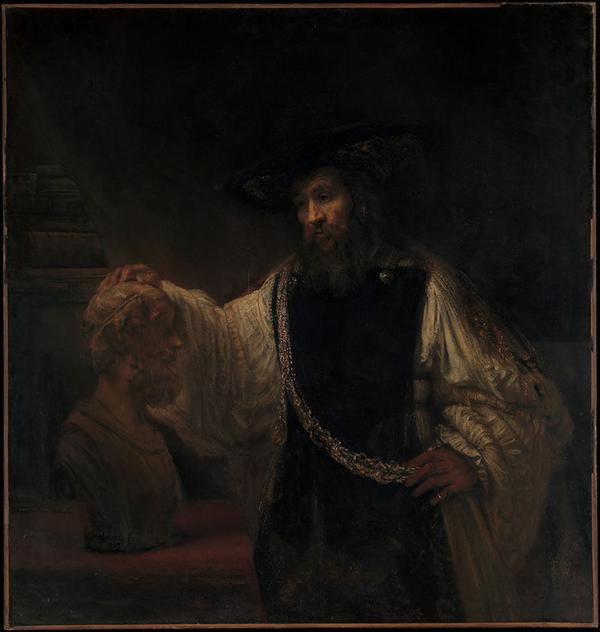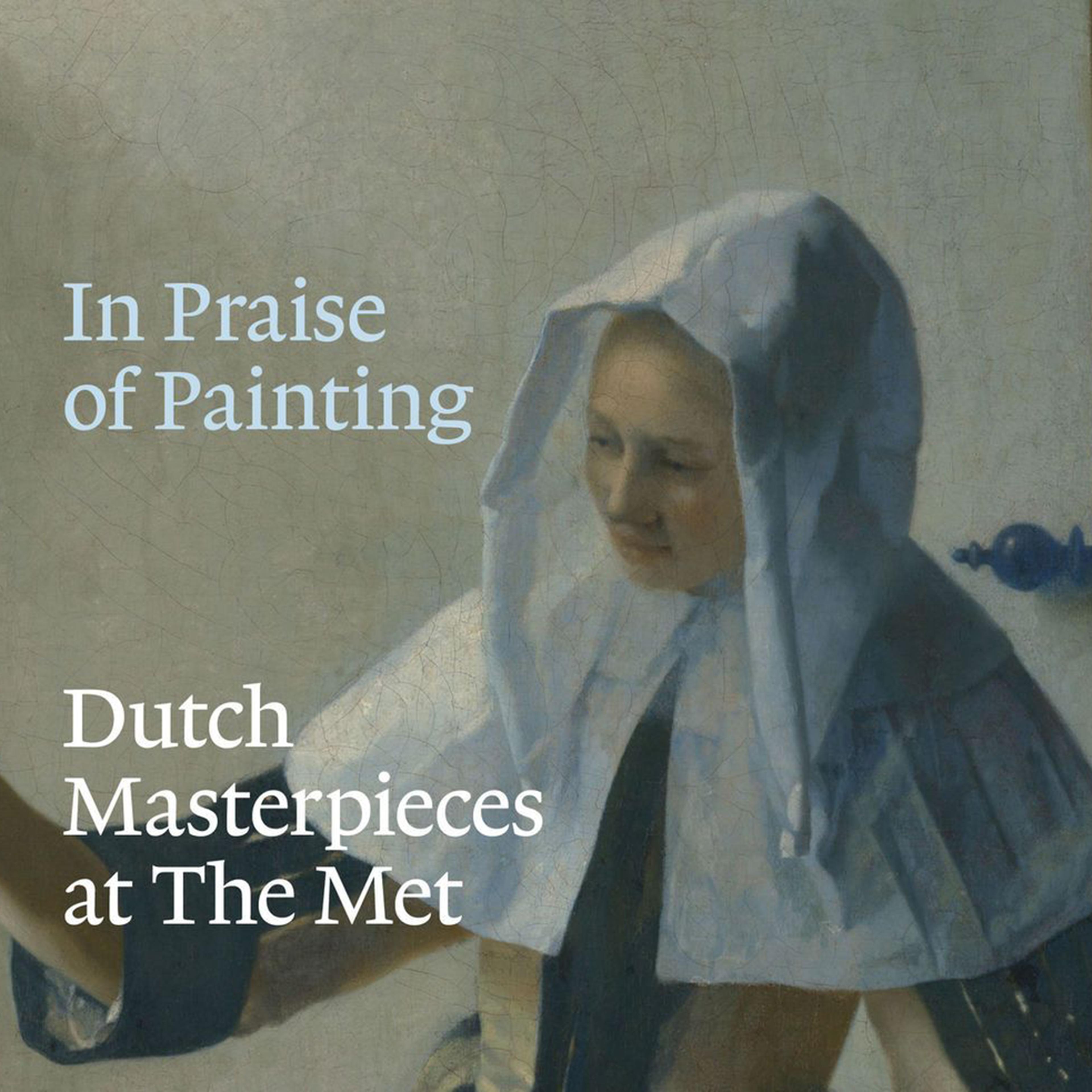Dutch paintings of the seventeenth century—the Golden Age of Rembrandt, Hals, and Vermeer—have been a highlight of The Met collection since the Museum's founding purchase in 1871. This exhibition brings together some of the Museum's greatest paintings to present this remarkable chapter of art history in a new light. Through sixty-seven works of art organized thematically, In Praise of Painting orients visitors to key issues in seventeenth-century Dutch culture—from debates about religion and conspicuous consumption to painters' fascination with the domestic lives of women.
The exhibition provides a fresh perspective on the canon and parameters of the Dutch Golden Age by uniting paintings from Benjamin Altman's bequest, the Robert Lehman Collection, and the Jack and Belle Linsky Collection. Works typically displayed separately in the Museum's galleries—such as Rembrandt's Gerard de Lairesse and Lairesse's own Apollo and Aurora—are presented side by side, producing a visually compelling narrative about the tensions between realism and idealism during this period. The presentation also provides the opportunity to conserve and display rarely exhibited paintings, including Margareta Haverman's A Vase of Flowers—one of only two known paintings by the artist and the only painting by an early modern Dutch woman currently in The Met collection. The exhibition takes its title from one of the period's major works of art theory, Philips Angel's The Praise of Painting (1642), a pioneering defense of realism in art.
Accompanied by an Audio Guide.
The exhibition is made possible by the HATA Foundation Fund.
The Audio Guide for this exhibition explores the enduring appeal of Dutch paintings of the seventeenth century. Hear from experts in diverse fields about how these artworks inspire them: a poet muses on still lifes and hidden truths, a cinematographer meditates on stories told with light, and a Dutch florist rearranges the fiction of floral arrangements.

5240. Introduction; Rembrandt, Aristotle with a Bust of Homer
ADAM EAKER: Hi, my name is Adam Eaker. I’m an Assistant Curator in the Department of European Paintings here at The Met. It's an incredible privilege for me as a young curator to be able to rethink the story that the Museum tells with one of the most celebrated parts of its collection. And coming at this from a different angle, I wanted to put these pictures in a new conversation with each other and tell some aspects of the story of seventeenth-century Dutch art that may be less familiar.
NARRATOR: What is it that makes these works among the most beloved in The Met’s collection? Why do they remain so meaningful and compelling to modern viewers? On this tour, we posed these questions to experts from diverse fields; and they’ve shared stories about how these masterpieces provide unique inspiration for their own creativity.
MARK DOTY: I think it's the quality of emotion; that it's suffused with feeling.
GAVIN FINNEY: Well, cinematographers love Rembrandt because Rembrandt isn’t afraid of the dark.
DOROTHY MAHON: There is no question in my mind from having worked closely on Rembrandt that he would rank among one of the greatest painters that ever lived. There’s no doubt.
NARRATOR: Rembrandt painted this portrait of Aristotle for an Italian nobleman, dressing the Greek philosopher in a dark garment with billowing white sleeves. This may be a costume—Rembrandt was known for having fanciful exotic clothing in the studio for his models to wear.
ADAM EAKER: You have this intensely somber color palette; a really moving, intense expression on the central figure’s face. And it's a painting that really looks like what we expect a Rembrandt to look like: a somber, powerfully painted, completely absorbing work of art. And for that reason it's really become an icon of the Dutch collection at The Met.
NARRATOR: When The Metropolitan Museum of Art was founded in 1870, its collection reflected America’s broader taste for Dutch art. The great collectors of New York had ties to the original founders of the city, then called New Amsterdam.
That connection holds today, as you will hear on this tour. Exhibition curator Adam Eaker is joined by Met conservators Gerrit Albertson and Dorothy Mahon, in addition to writer Mark Doty, cinematographer Gavin Finney, and third-generation Dutch florist Remco van Vliet.
This audio tour is sponsored by Bloomberg Philanthropies.
- 5240. Introduction; Rembrandt, Aristotle with a Bust of Homer
- 5241. Emanuel De Witte, Interior of the Oude Kerk, Delft
- 5242. Johannes Vermeer, Allegory of the Catholic Faith
- 5243. Gerard ter Borch the Younger, The Van Moerkerken Family
- 5244. Rembrandt, Man with a Magnifying Glass
- 5245. Jacob van Ruisdael, Wheat Fields
- 5246. Frans Post, Brazilian Landscape
- 5247. Jan Steen, The Dissolute Household
- 5248. Frans Hals, Young Man and a Woman in an Inn
- 5249. Rembrandt, Self-Portrait
- 5250. Rembrandt, Portrait of Gerard de Lairesse
- 5251. Gerard de Lairesse, Apollo and Aurora
- 5252. Rembrandt, The Toilet of Bathsheba
- 5253. Willem Claesz Heda, Still Life with Oysters, a Silver Tazza, and Glassware
- 5254. Jan Davidsz de Heem, Still Life with a Glass and Oysters
- 5255. Margareta Haverman, A Vase of Flowers
- 5256. Otto Marseus van Schrieck, Still Life with Poppy, Insects, and Reptiles
- 5257. Nicolaes Maes, Young Woman Peeling Apples
- 5258. Gerard ter Borch the Younger, Curiosity
- 5259. Johannes Vermeer, Young Woman with a Water Pitcher
Playlist

Exhibition Objects
Press the down key to skip to the last item.
Latest reviews
How great are The Met’s holdings in the Dutch Golden Age? Very.
. . . gorgeous show of treasures . . .
